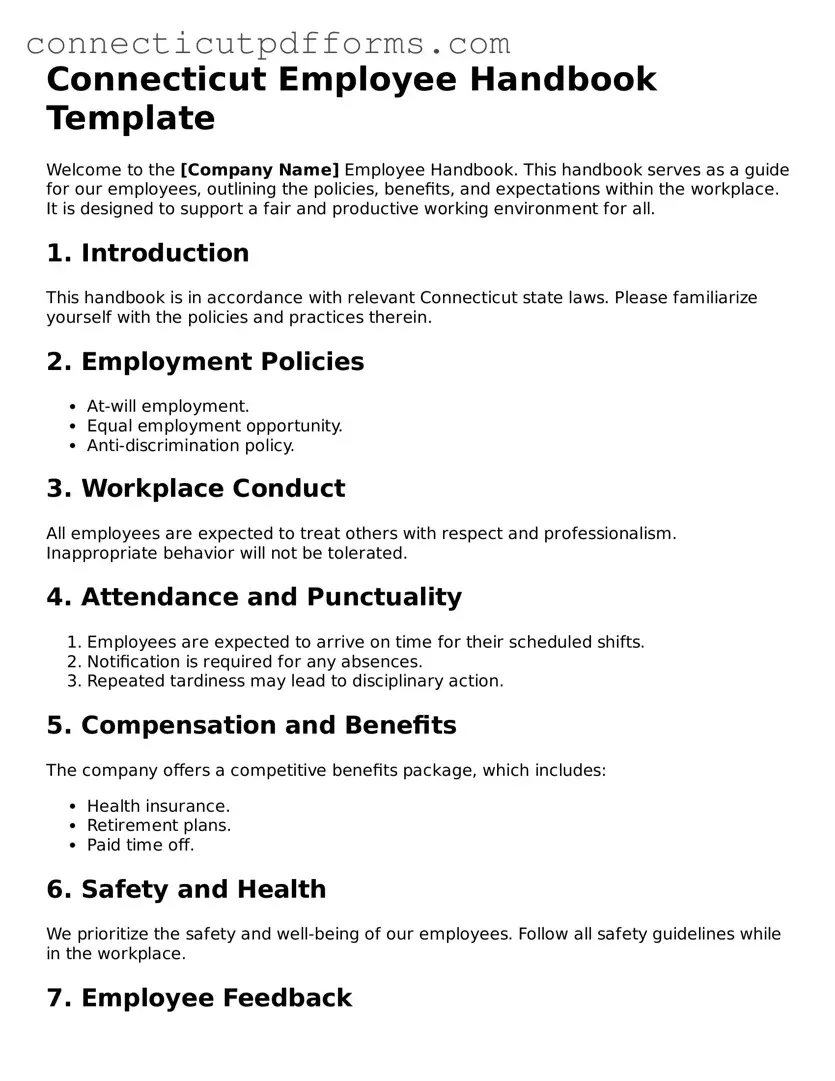Connecticut Employee Handbook Template
Welcome to the [Company Name] Employee Handbook. This handbook serves as a guide for our employees, outlining the policies, benefits, and expectations within the workplace. It is designed to support a fair and productive working environment for all.
1. Introduction
This handbook is in accordance with relevant Connecticut state laws. Please familiarize yourself with the policies and practices therein.
2. Employment Policies
- At-will employment.
- Equal employment opportunity.
- Anti-discrimination policy.
3. Workplace Conduct
All employees are expected to treat others with respect and professionalism. Inappropriate behavior will not be tolerated.
4. Attendance and Punctuality
- Employees are expected to arrive on time for their scheduled shifts.
- Notification is required for any absences.
- Repeated tardiness may lead to disciplinary action.
5. Compensation and Benefits
The company offers a competitive benefits package, which includes:
- Health insurance.
- Retirement plans.
- Paid time off.
6. Safety and Health
We prioritize the safety and well-being of our employees. Follow all safety guidelines while in the workplace.
7. Employee Feedback
Your feedback is valued. If you have concerns or suggestions, please reach out to your supervisor or the HR department.
8. Acknowledgment
Please sign below to acknowledge that you have received and understood the contents of this Employee Handbook:
Name: [Employee Name]
Signature: [Employee Signature]
Date: [Date]
